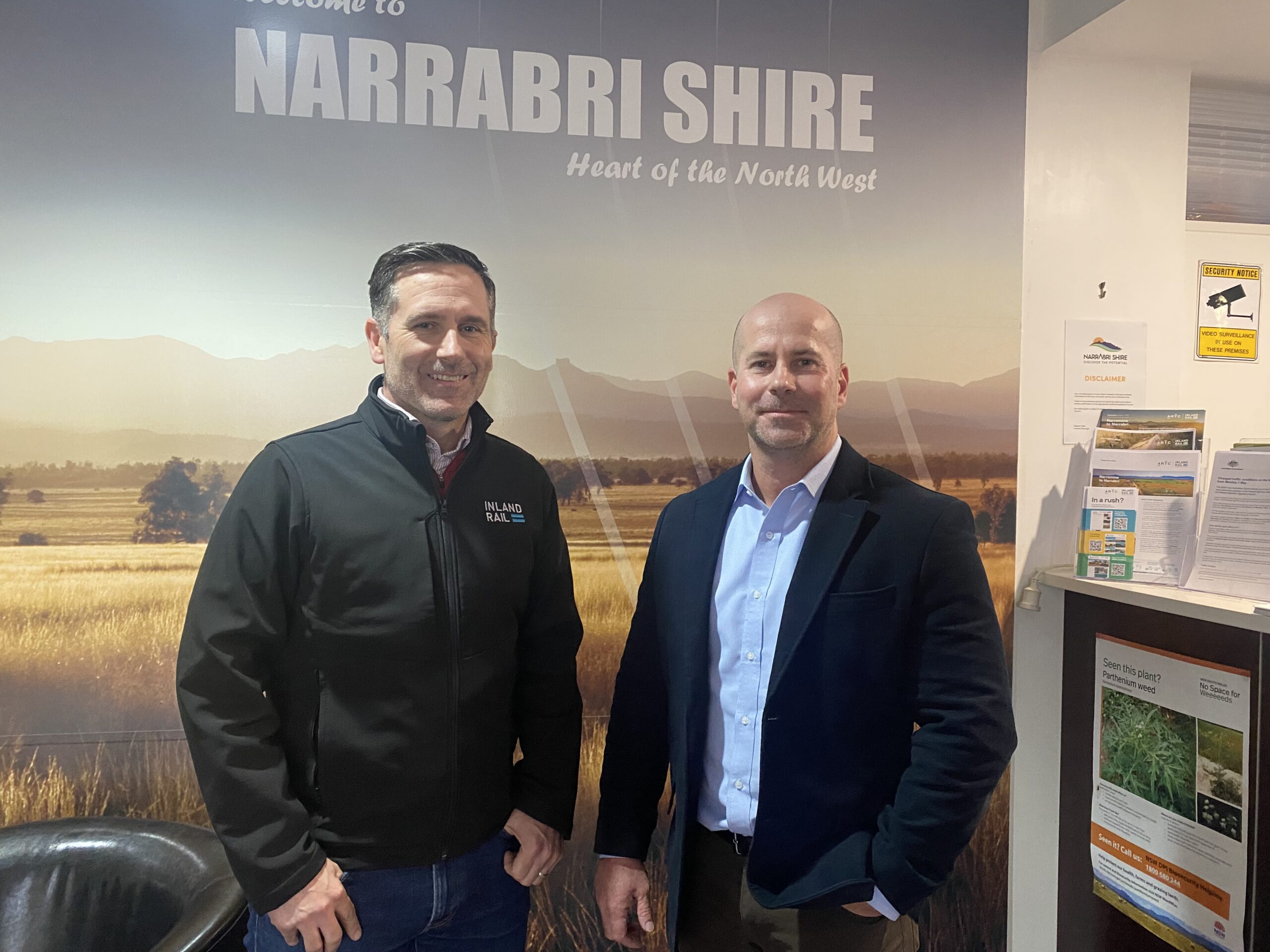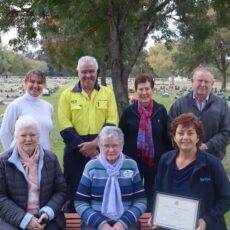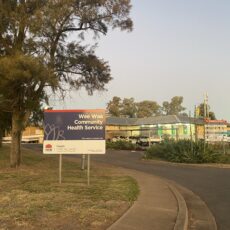Inland Rail project director of program enabling Rob Storey and director of strategy, corporate affairs and stakeholder relations Matthew Martyn-Jones attended last Tuesday’s ordinary council meeting to give an update on the project.
Mr Storey told the meeting “As of Monday” (this week) a subsidiary company would be set up with the sole purpose of delivering the Inland Rail.
“That company will have a separate board, the directors are being appointed as we speak,” he said.
During the update presentation to council, Mr Martyn-Jones said changing the route’s alignment would “open up a Pandora’s box” and create more delays and uncertainty.
“We don’t want to start unpicking that.”
The establishment of a subsidiary company was one of the recommendations of an independent review of the Inland Rail by former Energy Security Board chair Kerry Schott AO.
“The subsidiary company should have a dedicated board, say five members, and should include the chair of ARTC (Australian Rail Track Corporation) as a board member to ensure clear visibility of the Inland Rail project to the ARTC Board, with further ARTC representation limited to not more than one additional ARTC Board member,” states the recommendation.
The Schott report was handed down in April and two of its key findings included a budget blow out of an “astonishing” $31 billion and the board managing the project not having “the adequate skills” to oversee the it.
In addition to raising issues about the governance of the project, Dr Schott’s report noted, “the project has commenced delivery without knowing where it will start or finish”.
While a scathing assessment in parts, Dr Schott’s report stated it is an “important project” and said it is apparent Inland Rail can provide benefits to regional communities including employment and work for local businesses.
“Inland Rail should cease being managed as a division of ARTC and be set up as a subsidiary company of ARTC established for the sole task of delivering this project,” states the Schott report’s executive summary.
“The board of that subsidiary and ARTC should appoint a chief executive officer to run the project as it has not had a permanent chief executive officer for over 18 months.
“I understand that the previous government minister did not approve of the board choice for this position and indefinitely delayed taking the recommendation to cabinet.
“These new arrangements leave the current chief executive officer of ARTC to focus on the business-as-usual matters of the company and leave the Inland Rail project to be managed by a specialist chief executive officer with experience in project delivery.”
Before starting the presentation, Mr Storey said the council meeting setting was more formal than what they were expecting, but both Inland Rail representatives welcomed questions from councillors and happily agreed to be recorded as part of the public meeting.
NSC has previously agreed to supporting the concept of the Inland Rail project and the benefits it could bring to the region, but council “does not support the current proposed alignment as it does not provide an optimum outcome for the Narrabri Shire.”
One of the questions at the council meeting from Cr Rohan Boehm was – “What news have you got in relation to … an alternative route, that is almost certain to save hundreds of millions of dollars … and make our community much safer and better?”.
“I do have some news but unfortunately it’s probably not the news you want to hear,” said Mr Martyn-Jones.
“The report that Dr Schott did on Inland Rail was pretty clear and it said to basically stick to the alignment as it’s been determined.”
Mr Martyn-Jones said there had been “two decades of studies, considerations, discussions and debate” and they would “not be looking at any other alternative alignments for the project’s delivery.”
He said it would “open up a Pandora’s box” and create more delays.
“We don’t want to start unpicking that and creating further uncertainty.
“Since Dr Schott did her review, the NSW government has issued the environmental approvals.”
Mr Martyn-Jones did refer to the Schott Review noting the need for serious consideration in towns such as Wagga Wagga and Gatton where the route bisects the town.
“No immediate change should be made until there is a clear indication that train traffic is increasing.,” states the Schott review.
“Modifications to lessen any increased disruption caused by more train traffic should be given very serious consideration and adopted.”
Mr Storey said a timeline on when work would start and finish on the Narrabri section of the route was a “question for our ministers”, however, 2027 was a date mentioned in the council meeting discussions regarding the completion of the Victoria to Parkes section.
“We would need to start earlier than 2027, we would need to be well and truly underway by 2024/25,” Mr Storey added regarding the Narrabri section.
As previously reported by The Courier, Narrabri Inland Rail Concerned Residents Group has been lobbying for an alternate route further west of Narrabri for environmental, economic, and social reasons.
The group has been raising concerns about potential cost, noise, flood risks and land valuation issues since 2018.
“This (alternate) route is quicker to build, faster, flatter, easier and cheaper,” Narrabri Inland Rail Concerned Residents Group member Jim Purcell has previously told The Courier.
Mr Purcell is a local engineer and serves on the NSC Floodplain Risk Management Advisory Committee.
He is not against the Inland Rail project but has raised concerns about the route at Narrabri, especially the potential flood risks and “waste of money”.
“The Narrabri Inland Rail Concerned Residents Group looks forward to dealing with a new company and chief executive officer with the right experience and skills to manage the Inland Rail project construction,” he said following the release of the Schott report.
“We hope this will ensure the right engineering solution is progressed at Narrabri and the waste of $250m plus in construction of the new 40 kilometres of rail line at Narrabri and the additional flooding of 16 dwellings on Wee Waa Road is stopped.
“The current Inland Rail solution at Narrabri is a poor choice for Inland Rail and a very poor choice for Narrabri.”
Mr Purcell said the current alignment, which would skirt around the western edges of Narrabri, passing over Wee Waa Road, “is literally right up against the downstream side of Narrabri’s floodplain, so anything that you build downstream of a floodplain is going to impact flooding on a town.”
Mr Purcell was sitting in the public gallery during the Inland Rail update presentation to council last Tuesday and he said the campaign for the group’s suggested alternate route is not over.
“It’s not built yet,” said Mr Purcell after the meeting. “Our route has the potential to save $250 million and remove significant negative impacts for the Narrabri Shire.
“We’re not advocating for a complete change; we’re just looking to change the last 40 kilometres coming into town.
“I don’t believe they have spent decades looking at the Narrabri to Narromine section.
“They still need to meet the state government’s approval conditions.
“We’ve had a consultant in Brisbane compare the cost difference between our route and the current alignment – and we’re actually saving them money by changing it.
“We’ve had a consultant assess our bridge requirements at the downstream location.
“We’re looking forward to working with the new company.”
Narrabri Shire councillors also discussed the Special Activation Precinct and Inland Rail’s commitment to using of local workers and resources with the IR representatives.
“Yes to previous commitments met particularly on the local employment and supply chain,” said Mr Storey.
Councillors thanked Mr Martyn-Jones and Mr Storey for their time, and Mr Storey said they hoped to be back in Narrabri in August.
After the council meeting, the Inland Rail representatives told The Courier their main messages were:
“Since Dr Schott’s report was released we’ve been going through it very methodically and working with the department to make sure we understand exactly what’s expected of us over coming years.
“We’ve had a very clear message to focus on delivering the construction work south of Parkes and to manage the project costs closely to ensure we achieve value for money.
“Equally, we’ve had a really strong message that for the parts of Inland Rail that are North of Narromine, we must get on with acquiring the land needed for construction.
“To do this we will be working closely with local landholders and the local communities along our alignment.”
To order photos from this page click here










